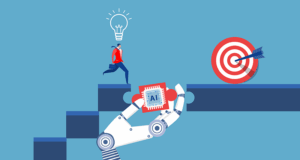A certain amount of stress on the job is inevitable — after all, it wouldn’t be work if it were easy. But today, many people suffer from excessive workplace stress, which can lead to burnout, health issues, and reduced productivity. Now, researchers reporting in the Journal of Biomedical Informatics have used artificial intelligence (AI) to detect when office workers are feeling stressed by monitoring their mouse and keyboard movements. Someday, the technology could be used to alert workers when it’s time to step away for a few minutes or take stress-reducing actions.
According to the American Institute of Stress, job stress costs U.S. companies $300 billion annually as a result of absenteeism, decreased productivity, and accidents. Taking a break can help prevent stress from building to harmful levels, but often, we don’t realize we need a break until it’s too late. That’s why researchers, led by Mara Naegelin at ETH Zurich, wanted to find a way to continuously and unobtrusively measure individual office workers’ stress levels through something they already use throughout the day: their computer.
The researchers recruited 90 participants who were randomly assigned to one of three groups: control (non-stress), stress condition 1, or stress condition 2. All three groups performed standard office tasks, such as scheduling appointments or entering and analyzing data. In the two stress conditions, participants were told 20 minutes ahead of time that they were going to be interviewed by a manager in front of their peers to find the best candidate for a promotion. Stress condition 2 amped up the stress even further by repeatedly interrupting the participants’ work with urgent chat messages. The researchers collected data on the participants’ heart rates, mouse and keyboard usage, and how stressed they reported feeling.
These data were analyzed by machine learning to identify patterns. Surprisingly, the research team found that the ways people moved their mouse and typed on their keyboard were even better predictors of how stressed they felt than their heart rate. Specifically, people who were stressed moved their mouse pointer longer distances, more frequently, and less precisely. They also made more mistakes on the keyboard, typing in fits and starts with many brief pauses. In contrast, relaxed people made slower, more efficient mouse movements, made fewer mistakes, and took fewer but longer pauses while typing.
The researchers acknowledge that workplace stress detection can raise thorny ethical issues. They emphasize the importance of anonymizing and protecting data so the technology can help workers identify stress early on and take action without creating a monitoring tool for employers.






